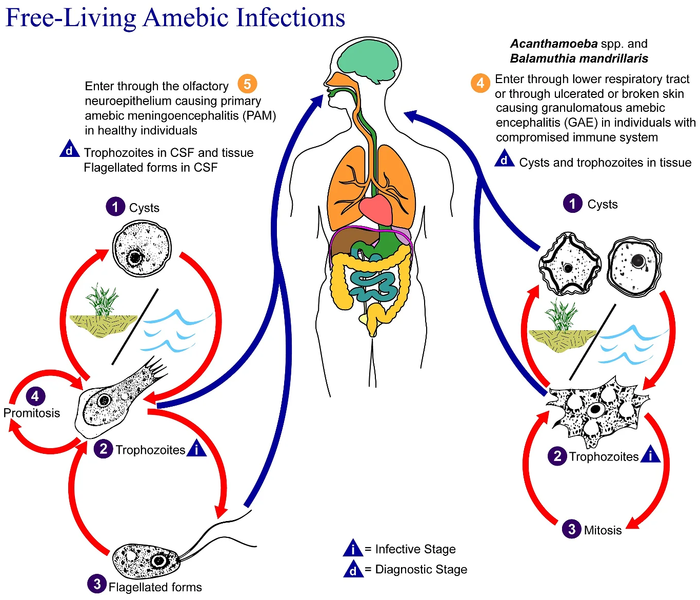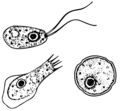קובץ:Free-living amebic infections.png

גודל התצוגה המקדימה הזאת: 700 × 600 פיקסלים. רזולוציות אחרות: 280 × 240 פיקסלים | 560 × 480 פיקסלים | 896 × 768 פיקסלים | 1,195 × 1,024 פיקסלים | 1,365 × 1,170 פיקסלים.
לקובץ המקורי (1,365 × 1,170 פיקסלים, גודל הקובץ: 715 ק"ב, סוג MIME: image/png)
היסטוריית הקובץ
ניתן ללחוץ על תאריך/שעה כדי לראות את הקובץ כפי שנראה באותו זמן.
| תאריך/שעה | תמונה ממוזערת | ממדים | משתמש | הערה | |
|---|---|---|---|---|---|
| נוכחית | 12:24, 2 בפברואר 2023 |  | 1,170 × 1,365 (715 ק"ב) | Materialscientist | https://answersingenesis.org/biology/microbiology/the-genesis-of-brain-eating-amoeba/ |
| 09:30, 20 ביולי 2008 |  | 435 × 518 (31 ק"ב) | Optigan13 | {{Information |Description={{en|This is an illustration of the life cycle of the parasitic agents responsible for causing “free-living” amebic infections. For a complete description of the life cycle of these parasites, select the link below the image |
שימוש בקובץ
![]() אין בוויקיפדיה דפים המשתמשים בקובץ זה.
אין בוויקיפדיה דפים המשתמשים בקובץ זה.
שימוש גלובלי בקובץ
אתרי הוויקי השונים הבאים משתמשים בקובץ זה:
- שימוש באתר de.wikibooks.org
- שימוש באתר en.wiktionary.org
- שימוש באתר fi.wikipedia.org
- שימוש באתר fr.wikipedia.org
- שימוש באתר gl.wikipedia.org
- שימוש באתר hr.wikipedia.org
- שימוש באתר is.wikipedia.org
- שימוש באתר it.wikipedia.org
- שימוש באתר pl.wikipedia.org
- שימוש באתר te.wikipedia.org
- שימוש באתר vi.wikipedia.org
- שימוש באתר www.wikidata.org
- שימוש באתר zh.wikipedia.org



